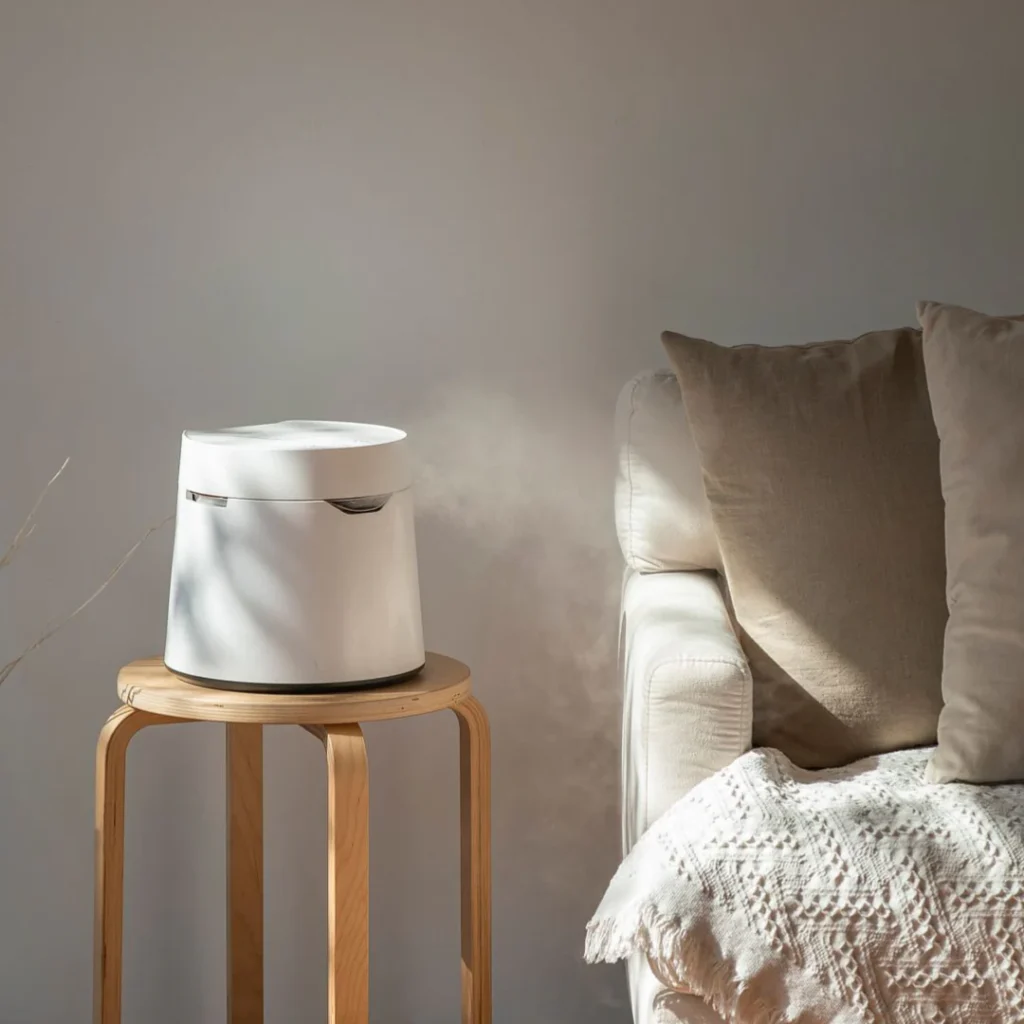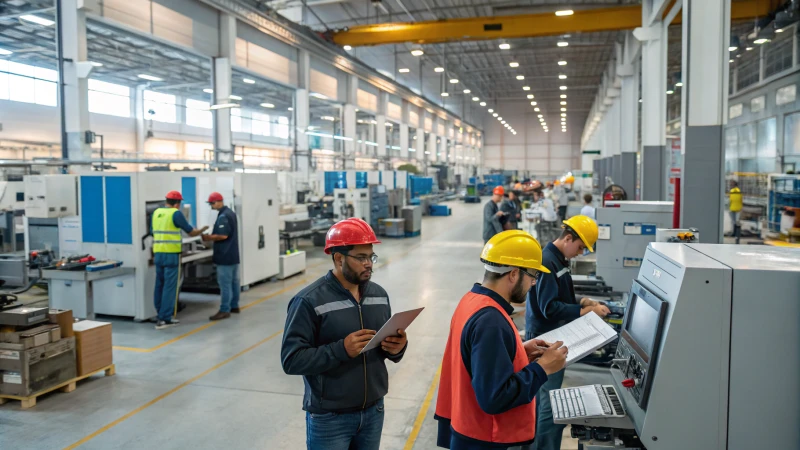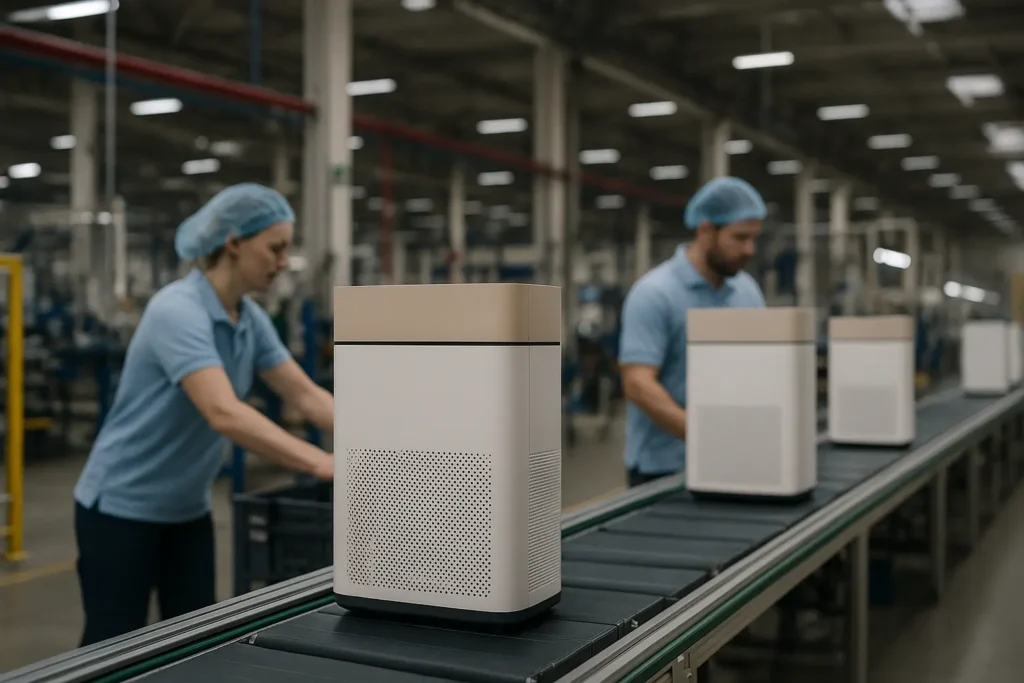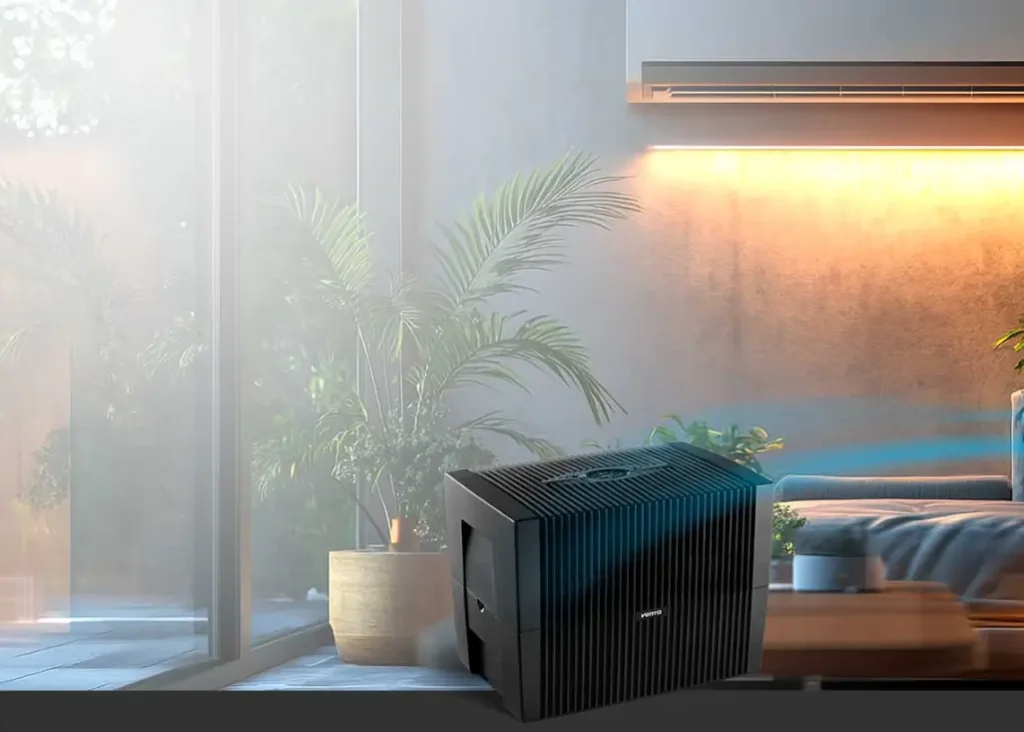
Nous voulons tous respirer un air pur à la maison, mais comment être sûr que nos purificateurs d'air font vraiment leur travail ?
Pour mesurer efficacement les performances d'un purificateur d'air, il faut se concentrer sur des paramètres clés tels que CADR (Clean Air Delivery Rate), les niveaux de bruit et les technologies de pointe telles que les systèmes de contrôle de la qualité de l'air. CCM (Clean Capture Measure). Ces facteurs permettent de comprendre l'efficacité d'un purificateur.
Tandis que CADR Si les niveaux de bruit et de pression acoustique constituent un point de départ, l'examen plus approfondi des technologies avancées et des mesures de performance permet d'obtenir une évaluation plus nuancée. Dans les sections suivantes, nous explorerons ces aspects en détail afin de vous aider à prendre des décisions éclairées.
Un CADR élevé signifie que le purificateur d'air est plus performant.Vrai
Le CADR mesure le volume d'air filtré par minute ; des valeurs plus élevées indiquent une élimination plus efficace des polluants.
Comment les CADR Impact sur l'efficacité des purificateurs d'air ?
Vous vous demandez ce qui rend un purificateur d'air vraiment efficace ? Tout peut se résumer à CADR!
CADRLe débit d'air pur (Clean Air Delivery Rate) est essentiel pour déterminer l'efficacité d'un purificateur d'air. Il mesure le volume d'air filtré délivré par le purificateur par minute. Un taux CADR indique une meilleure performance, en particulier pour l'élimination de polluants spécifiques tels que la fumée, le pollen et la poussière dans les environnements intérieurs.
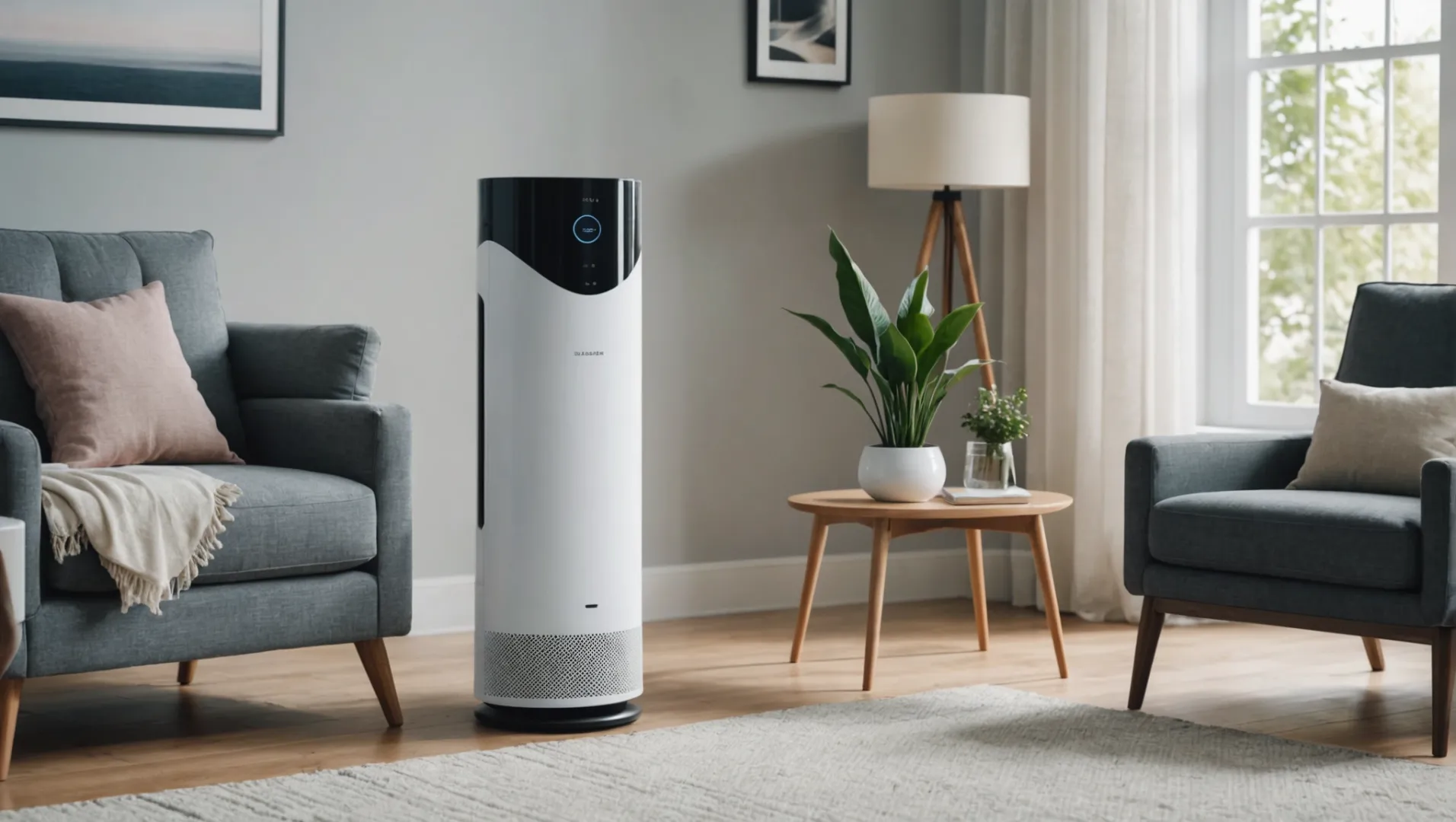
Comprendre CADR et son importance
CADRLe taux de distribution d'air pur, ou taux de distribution d'air pur, est une mesure utilisée pour évaluer l'efficacité d'un purificateur d'air à purifier l'air dans une pièce de taille donnée. Ce taux est déterminé en mesurant la quantité d'air filtrée de particules spécifiques, comme la fumée, la poussière et le pollen, au cours d'une période donnée.
| Type de polluant | Description |
|---|---|
| Fumée | Représente la plus petite taille de particules qu'un purificateur d'air peut traiter efficacement. |
| Poussière | Indique la propreté générale de l'air et la capacité du purificateur d'air à éliminer les particules les plus grosses. |
| Pollen | Mesure l'efficacité de la capture des allergènes en suspension dans l'air. |
Plus élevé CADR signifie une filtration plus efficace. Par exemple, si vous souffrez d'allergies, vous voudrez un purificateur d'air avec une valeur élevée de CADR pour le pollen afin de s'assurer qu'il élimine efficacement ces allergènes de votre espace.
CADR en fonction de la taille de la pièce
Choisir un purificateur d'air avec un CADR Il est essentiel d'avoir un système d'éclairage adapté à la taille de votre pièce. En règle générale, plus le CADR plus la pièce qu'il peut purifier efficacement est grande. L'utilisation d'un purificateur avec un CADR que ce qui est nécessaire pour la taille de votre pièce peut entraîner une purification de l'air inadéquate.
Équilibre CADR avec les niveaux de bruit
Alors qu'un taux élevé de CADR est souhaitable pour une purification rapide et efficace, elle s'accompagne souvent d'une augmentation du niveau sonore en raison de la vitesse élevée des ventilateurs. Des marques comme HisoAir ont innové dans ce domaine avec des technologies qui équilibrent élevé CADR avec réduction du bruit1. Cela signifie que vous n'avez pas à sacrifier le calme et la tranquillité à la qualité de l'air.
Technologies avancées Amélioration CADR
Certains purificateurs d'air modernes utilisent des technologies de filtrage avancées telles que CCM (Clean Capture Measure) pour améliorer encore leurs performances. CCM permet d'améliorer la longévité et l'efficacité des filtres, ce qui contribue à maintenir un niveau élevé de qualité de l'eau. CADR au fil du temps. Cela permet non seulement de préserver la qualité de l'air, mais aussi de réduire les coûts d'entretien à long terme.
Un CADR élevé signifie que le purificateur d'air est plus performant.Vrai
Le CADR mesure le volume d'air filtré ; des valeurs plus élevées indiquent une meilleure efficacité.
Le faible CADR convient aux grandes pièces.Faux
Un faible CADR peut ne pas suffire à purifier l'air dans les grands espaces, ce qui réduit l'efficacité de l'appareil.
Pourquoi le niveau sonore est-il un facteur important ?
Vous êtes-vous déjà demandé pourquoi le niveau sonore est un aspect crucial des purificateurs d'air ? Ce n'est pas qu'une question de décibels.
Le niveau de bruit des purificateurs d'air a un impact significatif sur le confort de l'utilisateur et l'efficacité opérationnelle. Un niveau de bruit élevé peut décourager une utilisation continue, tandis qu'un niveau de bruit faible garantit le confort, en particulier dans les chambres à coucher ou les bureaux. L'équilibre entre le bruit et les performances est la clé d'un purificateur d'air efficace.
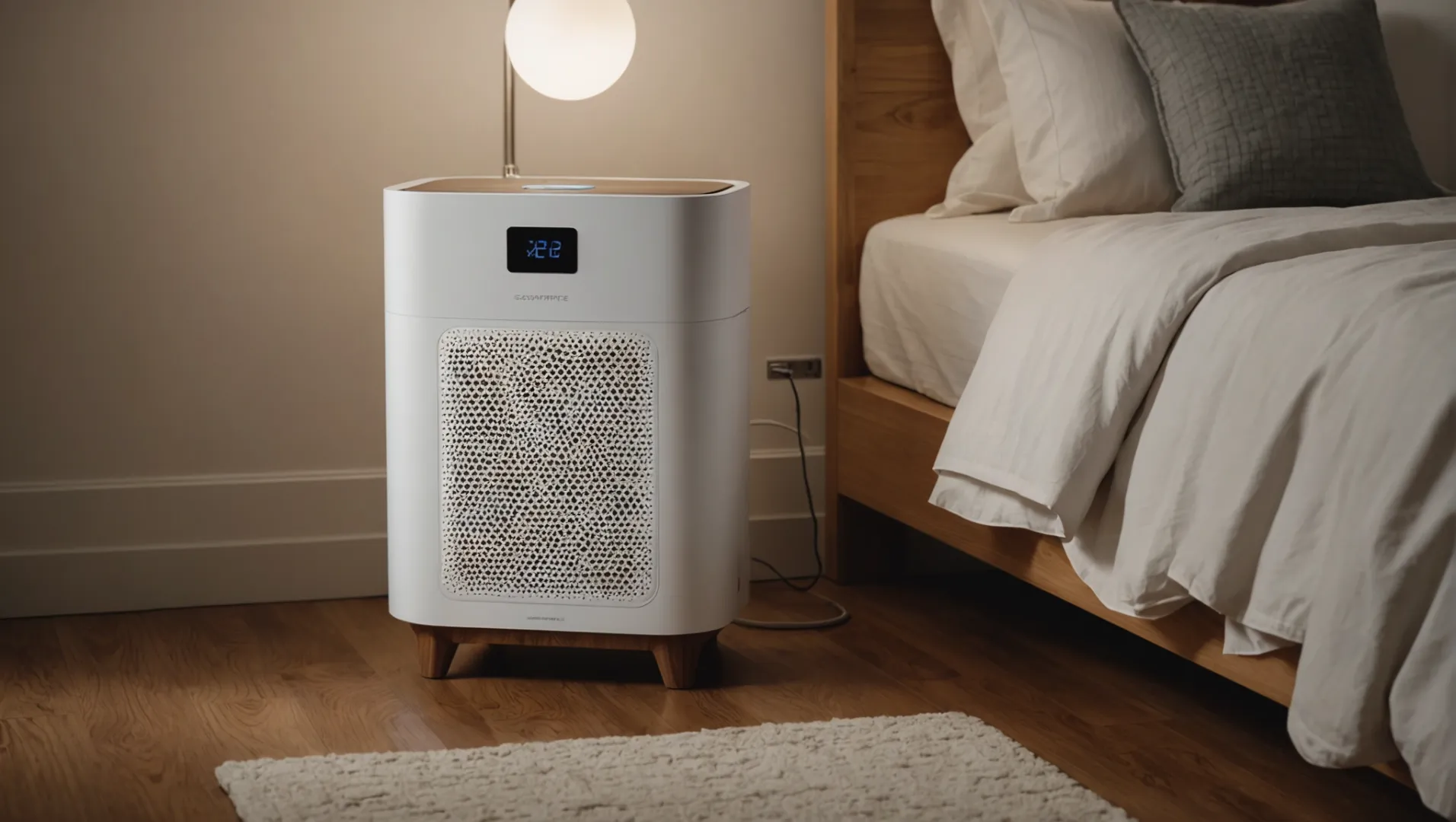
L'importance du niveau sonore dans la vie quotidienne
Lors du choix d'un purificateur d'air, le niveau sonore est souvent négligé alors qu'il a un impact important sur la vie quotidienne. Imaginez que vous placiez dans votre chambre à coucher un purificateur d'air dont le ronronnement est plus fort que celui d'un réfrigérateur. Cela peut perturber le sommeil, entraînant inconfort et insatisfaction. Un appareil plus silencieux garantit un fonctionnement sans intrusion, ce qui le rend approprié pour utilisation de la chambre2.
Équilibre entre performance et confort
Une idée fausse très répandue est que les purificateurs d'air à haute performance produisent intrinsèquement plus de bruit en raison de la puissance de leurs moteurs et de leurs ventilateurs. Cependant, des progrès tels que technologie d'annulation des décibels remettent en question cette notion. Des marques comme HisoAir ont été les pionnières de cette technologie, en créant des unités qui maintiennent des taux élevés de distribution d'air pur (CADR) tout en réduisant le bruit au minimum. Cette technologie permet aux utilisateurs de profiter des avantages d'une purification d'air puissante sans compromettre le confort.
Niveau sonore et débit d'air
En règle générale, un débit d'air plus important se traduit par des niveaux de bruit plus élevés, ce qui constitue un défi pour les fabricants. Toutefois, certaines entreprises ont réussi à concevoir des modèles qui optimisent à la fois le débit d'air et le niveau sonore. Par exemple, les modèles HisoAir s'appuient sur des éléments de conception innovants pour assurer une circulation d'air puissante tout en produisant un minimum de bruit.
Évaluation des niveaux de bruit
Pour déterminer si un purificateur d'air convient à votre espace, vérifiez l'indice de décibels fourni par les fabricants. En règle générale, un purificateur d'air doit fonctionner en dessous de 50 décibels pour les zones de sommeil. Vous trouverez ci-dessous un guide simple pour comprendre les niveaux de bruit :
| Niveau de décibels | Niveau de bruit perçu |
|---|---|
| 30 dB | Chuchotement |
| 40 dB | Bibliothèque tranquille |
| 50 dB | Bruit de bureau modéré |
| 60 dB | Conversation normale |
La compréhension de ces paramètres permet de choisir un purificateur d'air qui concilie efficacité de nettoyage et confort, en veillant à ne pas sacrifier la tranquillité à la performance.
Les niveaux sonores élevés découragent l'utilisation des purificateurs d'air.Vrai
Les purificateurs d'air bruyants peuvent perturber le sommeil et réduire le confort de l'utilisateur.
La technologie d'annulation des décibels augmente le bruit.Faux
Cette technologie permet de réduire le bruit tout en maintenant les performances du purificateur d'air.
Quel est le rôle de la technologie d'annulation des décibels ?
Imaginez que vous puissiez profiter d'un air pur et frais à la maison sans être gêné par le bourdonnement de votre purificateur d'air.
La technologie d'annulation des décibels minimise le bruit dans les purificateurs d'air haute performance, garantissant un environnement intérieur plus silencieux et plus confortable. Cette technologie permet aux purificateurs d'air de fonctionner efficacement sans le bruit perturbateur généralement associé à un flux d'air puissant, ce qui les rend plus adaptés à un usage domestique.
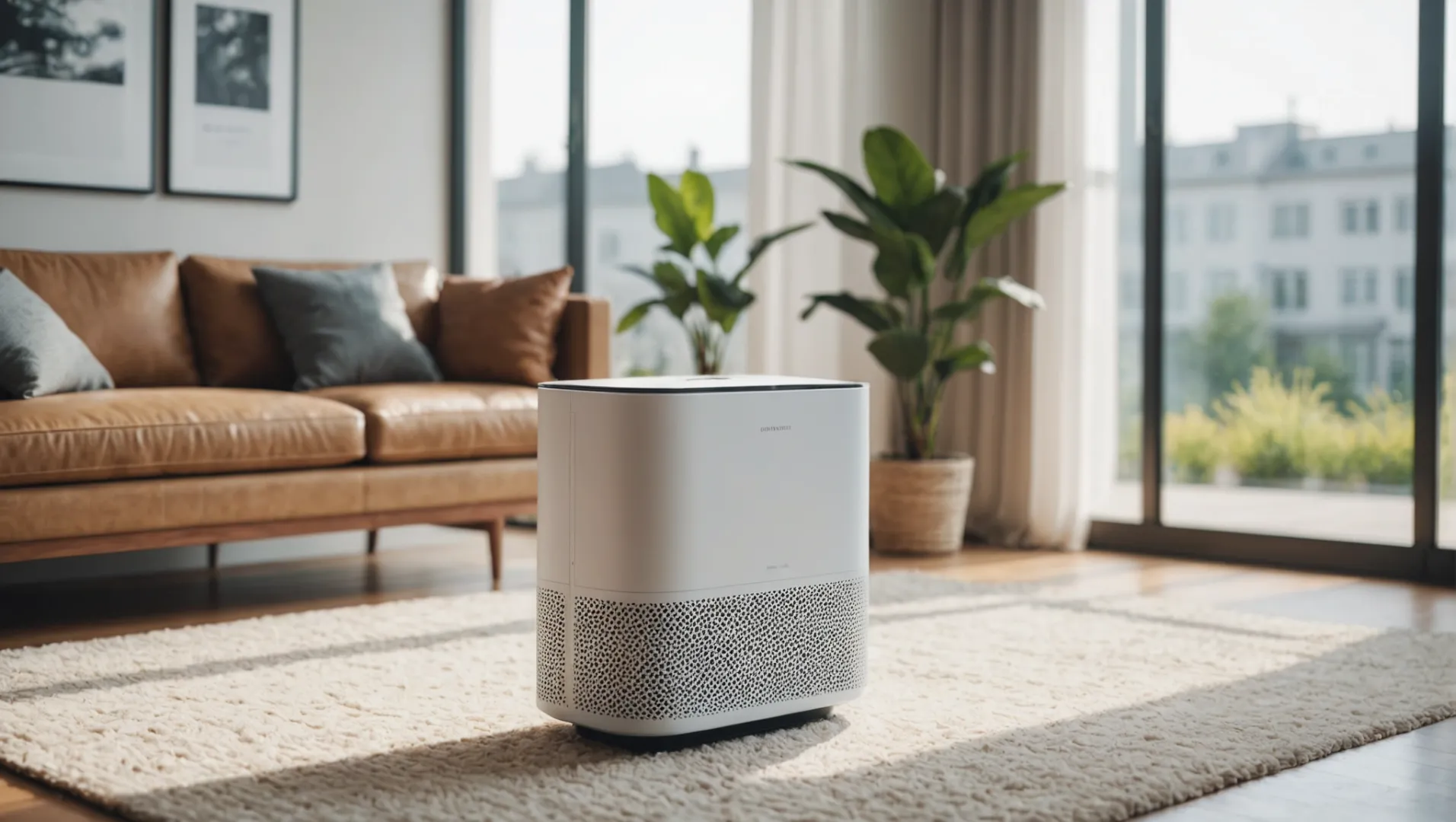
Comprendre la technologie d'annulation des décibels
La technologie d'annulation des décibels est une innovation de pointe qui réduit considérablement le bruit produit par les purificateurs d'air. Elle fonctionne en émettant des ondes sonores qui sont exactement à l'opposé (antiphase) du bruit généré par l'appareil. Lorsque ces ondes sonores entrent en collision, elles s'annulent mutuellement, ce qui permet un fonctionnement plus silencieux. Ce processus est particulièrement bénéfique dans les environnements où le silence est apprécié, comme dans les maisons ou les bureaux.
Avantages de l'élimination des décibels dans les purificateurs d'air
L'un des principaux avantages de la technologie d'annulation des décibels est qu'elle permet de maintenir un niveau élevé d'émissions de gaz à effet de serre. CADR3 sans augmenter le niveau de bruit. CADRou taux de distribution d'air pur, est une mesure cruciale qui indique la vitesse à laquelle un purificateur d'air peut nettoyer une pièce des particules en suspension dans l'air. En règle générale, un CADR signifie plus de flux d'air, ce qui peut entraîner une augmentation du bruit. Toutefois, l'annulation des décibels atténue ce problème, ce qui permet d'obtenir à la fois des performances élevées et un fonctionnement silencieux.
HisoAir, par exemple, a intégré l'annulation des décibels dans ses produits, mettant à profit plus de 20 ans d'expertise pour développer certains des purificateurs d'air les plus silencieux et les plus efficaces du marché. Cette technologie améliore non seulement le confort de l'utilisateur, mais s'aligne également sur les exigences du mode de vie moderne, qui accorde une grande importance au calme et à la tranquillité.
Un regard sur les tendances futures
La demande des consommateurs pour des appareils plus silencieux augmentant, le rôle de la technologie d'annulation des décibels est susceptible de se développer. On s'attend à ce que de plus en plus de fabricants adoptent cette technologie, non seulement pour les purificateurs d'air, mais aussi pour l'ensemble des appareils ménagers. Cette évolution favorisera l'émergence d'un nouveau niveau de vie, dans lequel les performances élevées ne se feront plus au détriment du confort.
Comparaison des niveaux de bruit
| Marque | Niveau de bruit (dB) | CADR (m³/h) | Caractéristiques spéciales |
|---|---|---|---|
| HisoAir | 25 dB | 350 | Annulation des décibels |
| Marque X | 45 dB | 300 | Fonctionnement standard |
| Marque Y | 50 dB | 320 | Filtration améliorée |
Ce tableau montre comment l'annulation des décibels peut réduire considérablement les niveaux de bruit tout en maintenant, voire en améliorant, les performances du purificateur d'air.
La technologie d'annulation des décibels offre un mélange harmonieux d'efficacité et de sérénité, ce qui en fait un aspect essentiel des purificateurs d'air modernes.
L'annulation des décibels réduit le bruit du purificateur d'air.Vrai
L'annulation des décibels émet des ondes sonores antiphasées pour annuler le bruit.
Un CADR plus élevé augmente les niveaux de bruit des purificateurs d'air.Faux
L'annulation des décibels permet d'obtenir un CADR élevé sans augmenter le bruit.
Comment CCM Influence sur la longévité des filtres et les économies de coûts ?
Découvrez comment CCM permet non seulement de prolonger la durée de vie des filtres, mais aussi de réduire les coûts.
CCM (Clean Capture Measure) améliore la longévité du filtre en capturant davantage de particules, réduisant ainsi la fréquence de remplacement et les coûts associés. Cette mesure permet d'évaluer l'efficacité à long terme et les avantages économiques des purificateurs d'air, ce qui en fait un élément crucial pour les consommateurs.
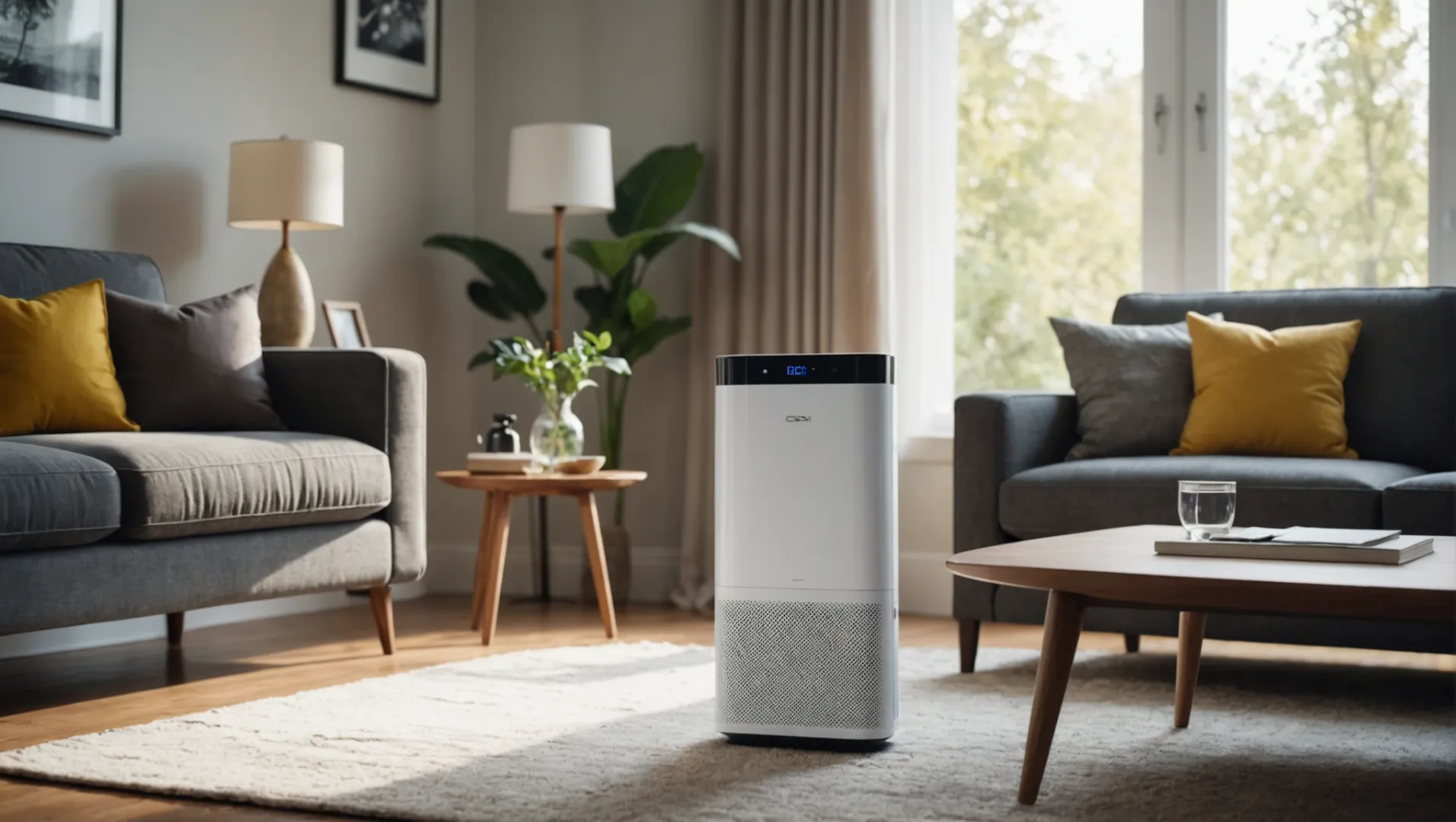
Comprendre CCM dans Purificateurs d'air
CCMou Clean Capture Measure, est une nouvelle mesure qui révolutionne la façon dont les consommateurs évaluent la valeur à long terme des purificateurs d'air. Contrairement aux mesures traditionnelles telles que CADRqui se concentre sur la vitesse de purification de l'air, CCM met l'accent sur la capacité du filtre à capturer et à retenir les particules dans le temps. Cela signifie que les filtres ayant une CCM peuvent capturer davantage de particules avant de devoir être remplacés, ce qui se traduit par une plus grande longévité et des économies.
Longévité grâce à une meilleure rétention des particules
Le principe de base de la CCM est sa capacité à retenir de plus grands volumes de contaminants. Les purificateurs d'air à haute CCM comme ceux mis au point par des entreprises dotées de technologies de pointe telles que HisoAir, sont équipés de filtres conçus pour retenir davantage de poussière, de pollen, de fumée et d'autres particules en suspension dans l'air. Cette capacité accrue retarde le moment où les filtres se bouchent et deviennent inefficaces, ce qui prolonge leur durée de vie.
Avantages économiques d'un niveau de vie plus élevé CCM Notations
D'un point de vue financier, l'investissement dans un purificateur d'air doté d'un filtre à air de qualité supérieure peut s'avérer très rentable. CCM peut se traduire par des économies significatives au fil du temps. La diminution du nombre de remplacements de filtres se traduit par une réduction des dépenses courantes, ce qui rend ces appareils plus économiques pour une utilisation à long terme. Par exemple, si un purificateur d'air standard nécessite un changement de filtre tous les six mois, un purificateur d'air à haute efficacité énergétique est plus économique.CCM peut porter cet intervalle à neuf mois ou plus.
| Fonctionnalité | Filtre standard | Haut CCM Filtre |
|---|---|---|
| Fréquence de remplacement | Tous les 6 mois | Tous les 9 mois et plus |
| Coût annuel | $60-$120 | $40-$80 |
Tendances futures et avancées technologiques
Alors que les préoccupations en matière de qualité de l'air augmentent, la demande de solutions efficaces et rentables s'accroît. CCM est en passe de devenir une norme dans l'évaluation des purificateurs d'air, avec des entreprises telles que HisoAir qui sont à la pointe de l'intégration de médias filtrants de haute performance. Avec plus de 20 ans d'expérience dans la technologie de purification de l'air, HisoAir ne se contente pas d'améliorer la qualité de l'air, mais innove également en rendant ces avancées accessibles et abordables pour les consommateurs.
Pour en savoir plus sur les technologies des purificateurs d'air et leur impact sur les économies, consultez le site suivant des méthodes avancées de purification de l'air4.
Le CCM prolonge la durée de vie du filtre en capturant davantage de particules.Vrai
Le CCM améliore la longévité du filtre en retenant davantage de particules.
Des indices CCM plus élevés entraînent des remplacements de filtres plus fréquents.Faux
Des indices CCM plus élevés réduisent la fréquence de remplacement, ce qui permet de réaliser des économies.
Conclusion
La compréhension de ces techniques de mesure permet à votre purificateur d'air de fonctionner au mieux pour une qualité optimale de l'air intérieur.
-
Découvrez comment HisoAir réduit le bruit tout en maintenant un CADR élevé : les purificateurs d'air HiSo utilisent la technologie Decibel Cancellation™, permettant l'utilisation de filtres moins denses. Les particules chargées adhèrent plus facilement, ce qui réduit le besoin.... ↩
-
Découvrez les modèles silencieux parfaits pour une utilisation nocturne.. : Nous avons testé plus de 60 purificateurs d'air au cours des neuf dernières années, et l'exceptionnel Coway Airmega AP-1512HH Mighty est notre meilleur choix parmi eux. ↩
-
Découvrez l'impact du CADR sur les performances et l'efficacité des purificateurs d'air.. : Le CADR (Clean Air Delivery Rate) est un indicateur qui a été mis au point pour mesurer les performances des purificateurs d'air à usage domestique. La note CADR reflète la ... ↩
-
Découvrez les technologies de pointe en matière de purification de l'air qui réduisent les dépenses. : Les purificateurs d'air certifiés sont plus efficaces sur le plan énergétique que les modèles standard, ce qui permet d'économiser plus de 120 kWh/an ou $15 par an sur les factures d'électricité. ↩



